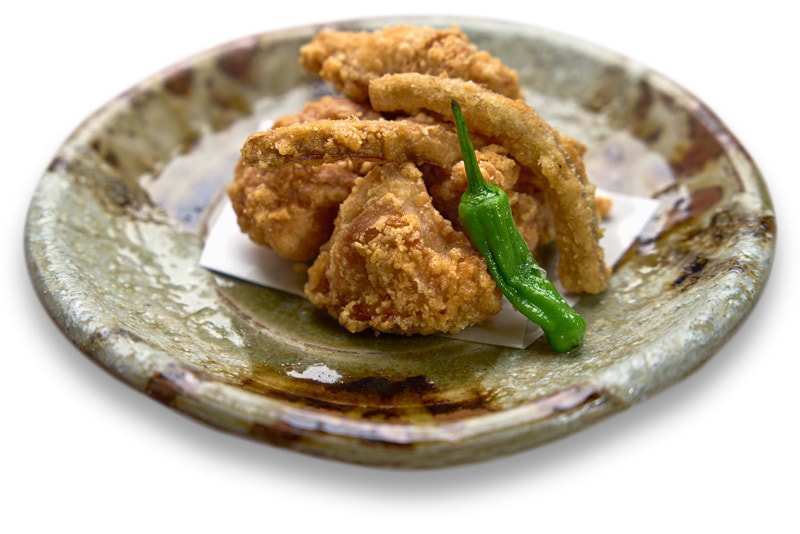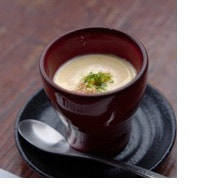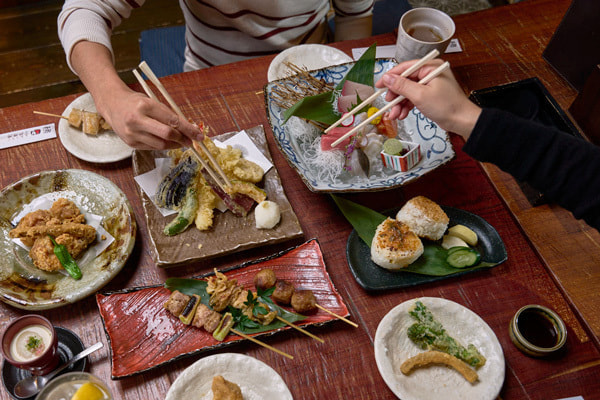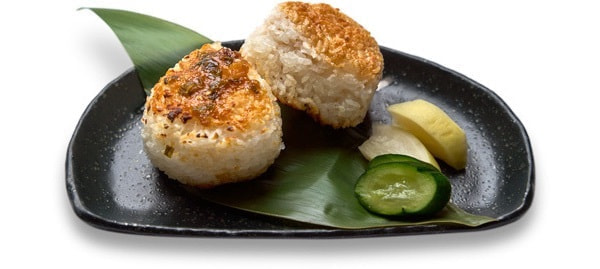
Exploring the Beautiful
World of the Izakaya
Visiting an izakaya for the first time
can be a daunting experience, especially
for someone who cannot speak Japanese and may not be familiar with the local culture. Anxieties about problems with communication or being able to understand the menu often deter foreigners from stepping through the doors of these traditional Japanese restaurants. But please don’t worry. This article hopes to share some useful tips on how to get the most from your first izakaya experience.
In the past, izakayas catered to office workers and businessmen who wanted to drink and unwind after a long day at work. These days however, there are various types of izakaya, ranging in size, and the kinds of food they serve, thereby attracting all kinds of different people who are looking for a place to enjoy a night out on the town.
After you sit down, the waiter will probably leave you alone until you are ready to order. Large izakayas usually have a call button you can press. If you don’t see one on the table, you may need to call out sumimasen to get the waiters attention. Don’t feel shy about doing this, the waiters are aware that you are there, and will usually respond quickly after you call them.


A variety of food and drink
The dishes that are available differ from izakaya to izakaya, but generally they serve traditional Japanese food like sashimi, tempura and yakitori. You may even find familiar western foods that have been adapted to suit the Japanese taste, for example steak cooked in soy sauce, or Japanese style omelets known as tamagoyaki. Also keep a look out for any regional foods. Ishikawa prides itself for its fresh seafood, Kaga vegetables and Noto beef. Another part of the izakaya culture is the shime, which can loosely be translated as ‘the final dish’. Eating rice balls, ochazuke (broth with rice) or noodle dishes are often seen as great ways to finish up your izakaya meal.

[ Final thoughts]
In my opinion, the izakaya is the perfect way to relax and enjoy talking with your friends while trying a variety of different food in just one meal. At Daian I was able to enjoy a wonderful selection of tempura, sashimi, yakitori, karaage (fried chicken) and for my shime, yaki-onigiri (fried rice balls). I can say with confidence that it’ll be an experience you will never forget. So, the next time you walk past the doors of an izakaya, please don’t hesitate to give it a try.

Justin Llaneza Bailey is from the U.K. but has lived in Japan for almost 15 years. He currently teaches English at a private university in Ishikawa. His hobbies include reading books and travelling.
Special Thanks
Izakaya DAIAN
1F/BF Central Bldg., 4-1, Horikawamachi [Map P6:C3]
Tel.076-263-5858
http://www.daian.ne.jp






